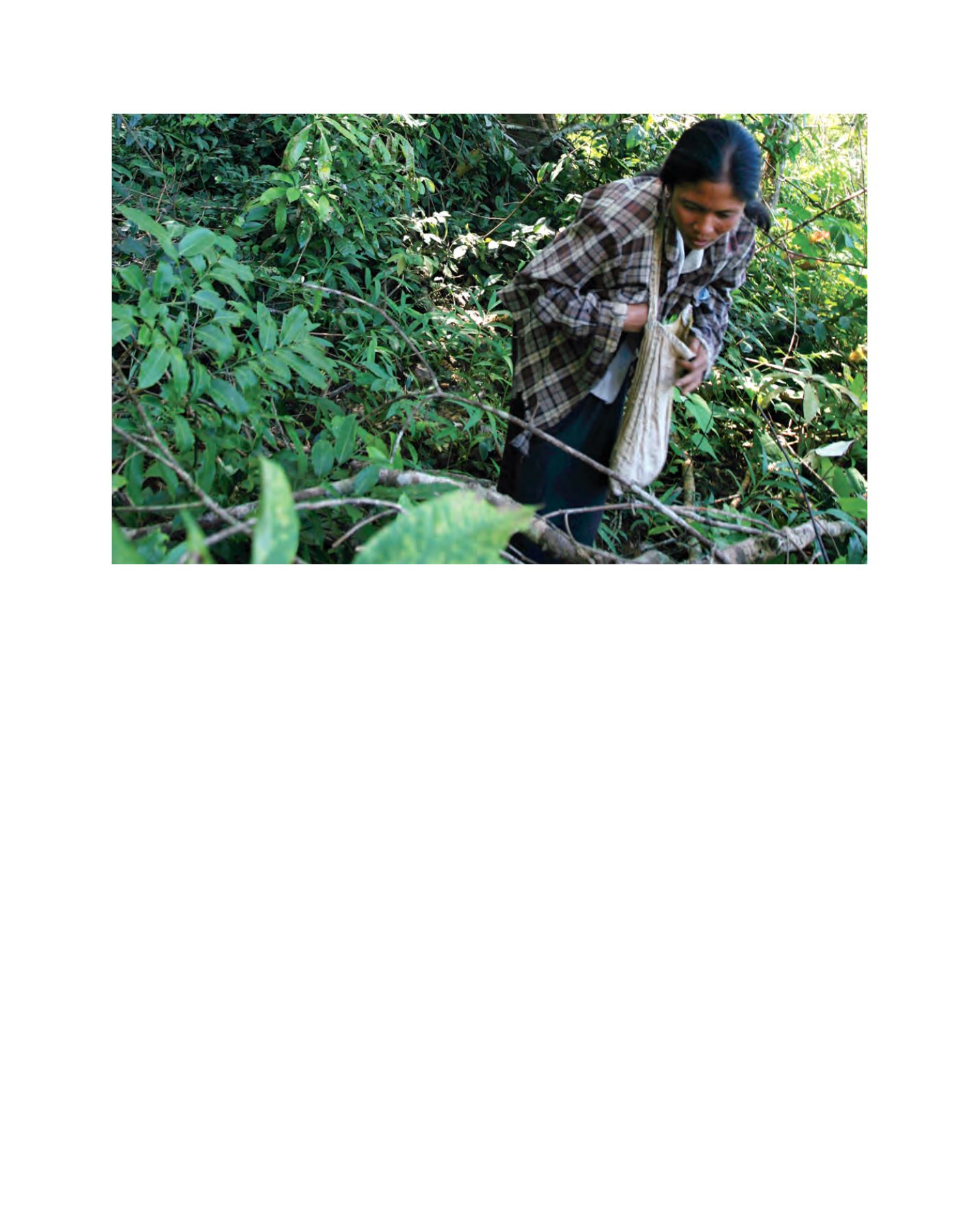

[
] 247
and capacities have been built through institutionalization of new
rules for sustainable land and forest resource management, embed-
ding these in upstream planning processes from provincial to national
level. Local management has encouraged decentralization, people’s
participation and greater accountability for resource management.
Exploring the potential for REDD+ and other sustainable
financing opportunities
BCI recognizes that the valuation of ecosystem services is essential to
correct market failures in reflecting the true value of natural forests
to society and to the national economy, beyond timber revenues.
The project established a method to describe forest-based ecosystem
services in monetary terms to inform the decision-making process of
economic planners and policymakers and applied it to 2.3 million
hectares of forest areas along the biodiversity conservation corridors
in Cambodia, Lao PDR and Viet Nam, for five types of services:
(i) non-timber forest products; (ii) carbon storage/sequestration;
(iii) watershed protection; (iv) water quality regulation and (v) soil
erosion control. The total value of ecosystem assessed amounted to
US$9.3 million, or almost US$4,000 per hectare. Carbon storage
function provides the highest values, US$4.2 million or over 45 per
cent of the total.
Mainstreaming ecosystem service values into economic devel-
opment planning processes is important to addressing drivers of
deforestation and forest degradation. These initiatives also increase
the evidence base for leveraging new and additional sources of
financing, including through reducing carbon emissions from
deforestation and forest degradation and other associated actions to
conserve and enhance forest carbon stocks (REDD+). The baseline
information collected on forests and people as well as the economic
valuation methodologies piloted under BCI can be
tailored to REDD+ measurement, reporting and verifica-
tion (MRV) requirements. BCI is already moving ahead
with the establishment of reference levels, additional-
ity tracking and design of performance-based REDD+
actions. There is also potential for designing bundled
ecosystem payment schemes.
In spite of considerable progress by GMS countries in
managing forest areas, the magnitude of pressures still
outpaces the responses. While economic development
in the GMS has improved human well-being, uneven
distribution of wealth remains a challenge. Economic
development, without balance and strategic planning,
can put ecosystem services and the livelihoods of local
people at risk. This is why promoting community
forest management along biodiversity corridors holds
such promise, even as it needs to be coupled with
improving food security, providing small-scale infra-
structure for basic services, and integrating livelihood
improvement activities. The pilot activities under
the Biodiversity Conservation Corridors Initiative
have shown that a decentralized community-oriented
approach to resources management offers an effec-
tive response to forest degradation. The economics of
the GMS countries are often referred to as part of the
rapidly growing ‘Asian Tigers’. Let us hope that such
an economic programme can be achieved in ways that
will preserve the Tigers’ namesake’s habitat alongside
other ecosystem services derived from this region’s
still rich forest resources.
Gathering medicinal seeds in the forest near Ban Namon village
Image: S. Griffiths
















